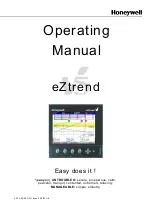
Jump to: Table of Content
2022/04/11
Page: 43
8466.949000 1 283 Rx d 8 00 00 00 00 00 00 00 00
8467.133000 1 283 Rx d 8 00 00 00 00 00 00 00 00
8467.269000 1 283 Rx d 8 00 00 00 00 00 00 00 00
8467.591000 2 123 Rx d 8 01 23 45 06 00 00 00 00
8467.710000 2 123 Rx d 8 01 23 45 06 00 00 00 00
8467.862000 2 123 Rx d 8 01 23 45 06 00 00 00 00
8468.792000 2 123 Rx d 8 01 23 45 06 00 00 00 00
8469.070000 2 123 Rx d 8 01 23 45 06 00 00 00 00
8469.532000 2 283 Rx d 8 00 00 00 00 00 00 00 00
8470.046000 1 123 Rx d 8 01 23 45 06 00 00 00 00
8470.650000 1 283 Rx d 8 00 00 00 00 00 00 00 00
8472.127000 1 123 Rx d 8 01 23 45 06 00 00 00 00
Lines are terminated with <cr><lf>
8.3
CAN
-
BINARY DATA FORMAT
8.3.1
CAN frame container
CAN messages are mapped into a 28 byte long array
. This “container” format allows to hold variable
length CAN messages while always maintaining the same container length. It also adds a timestamp:
Byte
Bits
Description
1
7..0
User definable header bytes. Usually all '0'.
2
15...8
3
23..16
4
31..23
5
7..0
Frame descriptor: reserved bits, all '0'
6
7..0
Frame descriptor: reserved bits, all '0'
7
7..4
Frame descriptor: reserved bits
3..0
Frame descriptor: CAN data length
8
7
Frame descriptor: Frame type (0 = standard, 1 = extended)
6
Frame descriptor: RTR bit ('1' = RTR bit is set)
5..0
Frame descriptor: reserved bits
9
7…0
Message ID
Standard message: valid bits 10..0
Extended message: valid bits 28..0
10
15...8
11
23..16
12
31..23
13
7..0
CAN data bytes in the order 1 …8
Valid number of bytes defined by CAN data length
14
7..0
15
7..0
16
7..0
17
7..0
18
7..0
19
7..0
20
7..0
21
7…0
Real time clock time stamp in seconds since 01.01.2007
22
15...8




































